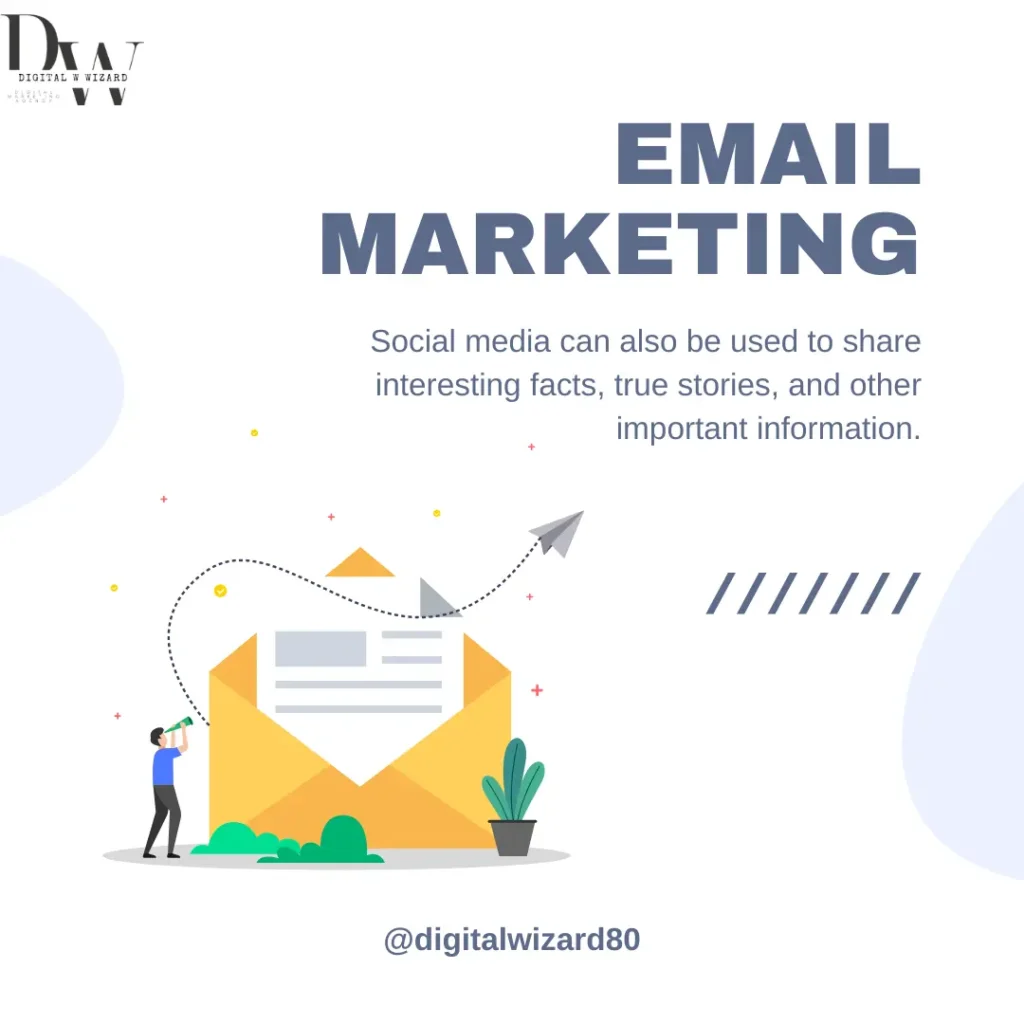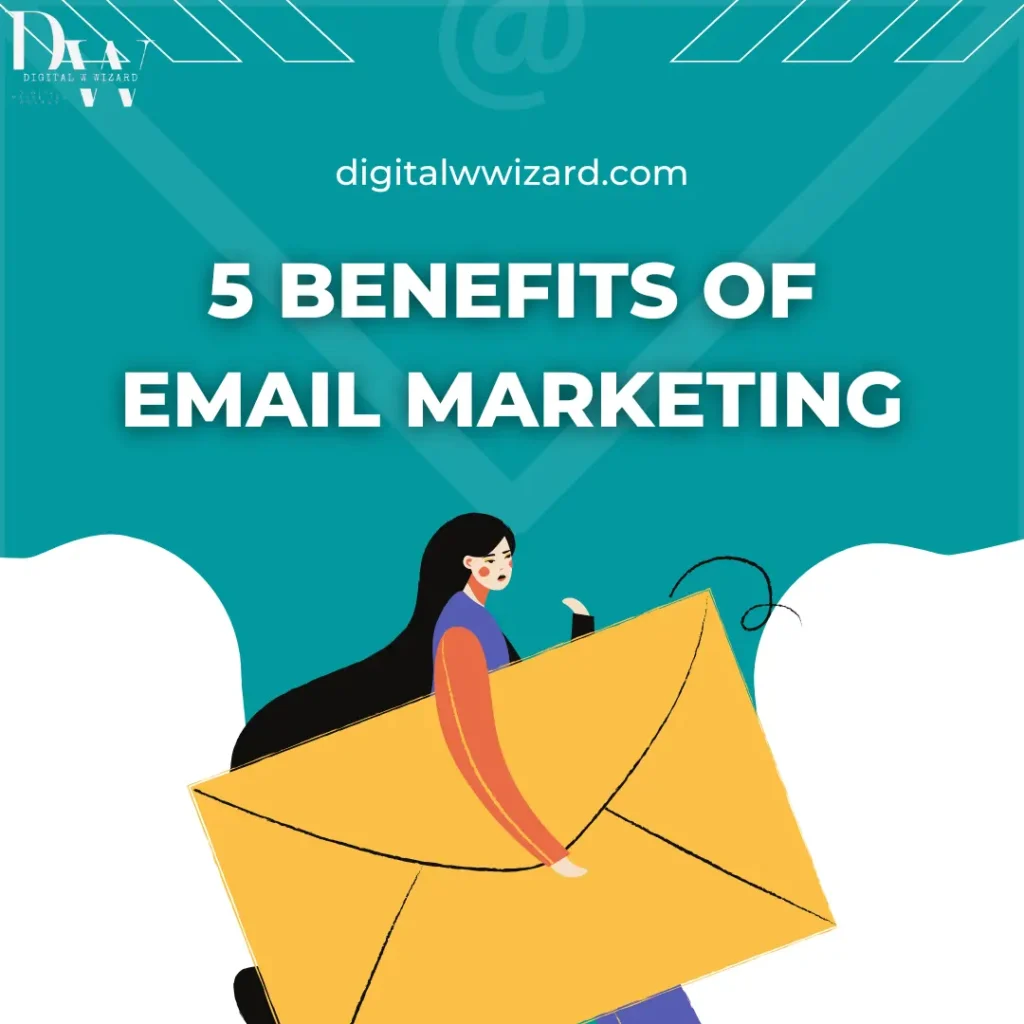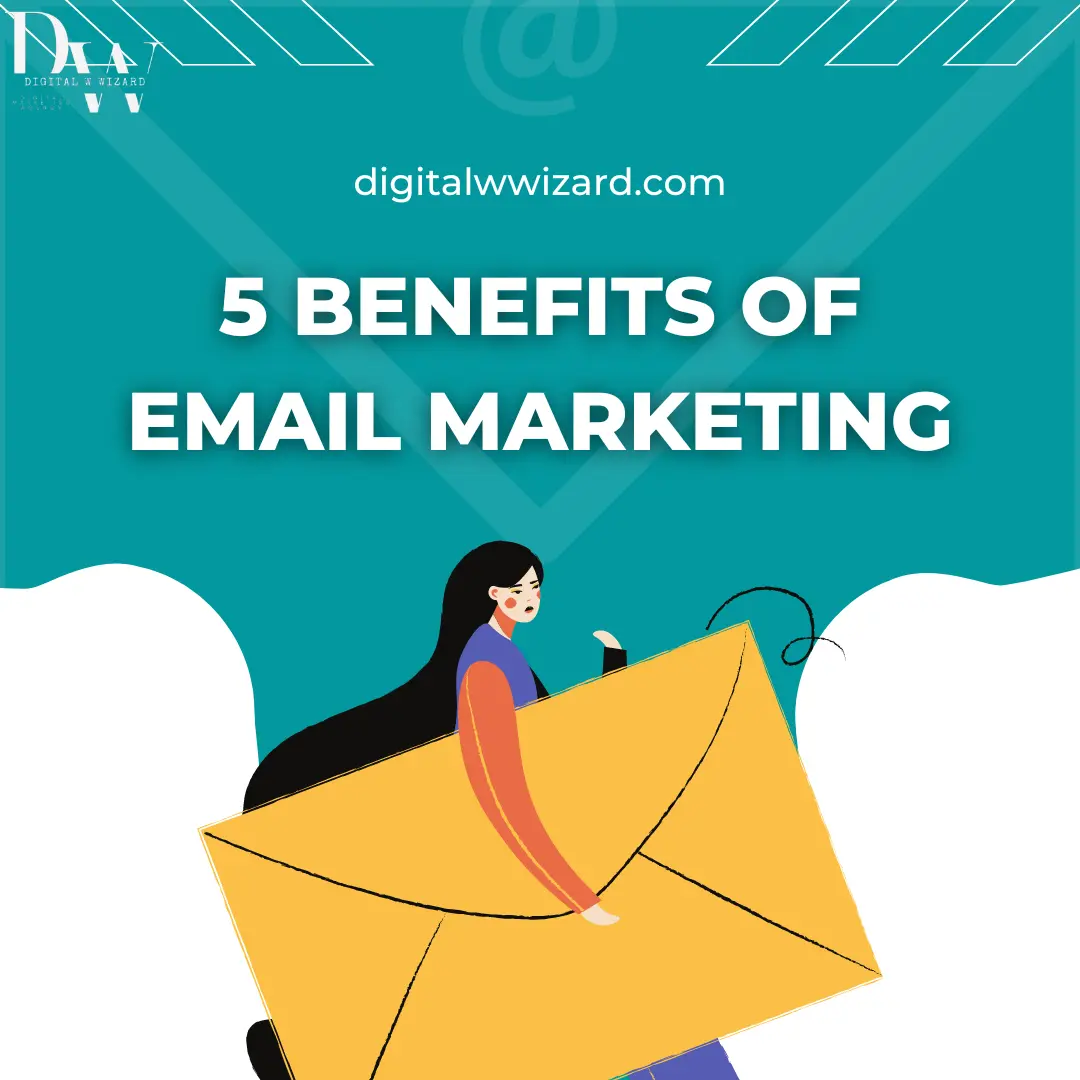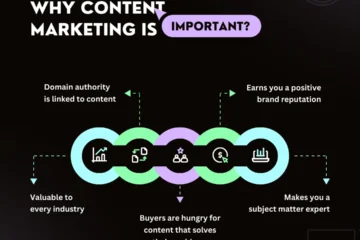A powerful tool for small business customer acquisition and retention is E-mail marketing. Despite the proliferation of communication channels, email is delivering excellent results.
Research indicates that email marketing is a financially profitable strategy, generating an average return of $42 for every $1 invested. This complete guide will discuss many email marketing best practices and strategies that small businesses can use to increase sales and expand their customer base.
What is E-mail Marketing
E-mail marketing is a process of promoting products and services using e-mail and sending commercial emails.

Why E-mail Marketing Matters for Small Businesses?
Because email marketing is so good at reaching and attracting customers, it is still a popular choice for small businesses. Research shows that 82% of small and medium-sized companies use email to retain customers, while 85% of them use it primarily to recruit new people. Additionally, email has a higher conversion rate than social media—7.05% of email recipients make a purchase, compared to 2.9% on social media. These statistics show how important it is to include E-mail Marketing in your overall marketing plan.
Choose the right software for email marketing
Selecting the appropriate email marketing software is essential for successful email marketing implementation. E-mail marketing software automates essential tasks, saving time and simplifying the process. When choosing software, keep the following features in mind:
- Ability to Customize The secret to successful email marketing is personalization. To provide a more customized experience, look for email marketing software that lets you include your recipients’ names, birthdays, and interests in your emails.
- Drag-and-Drop Editor Choose E-mail marketing software with a drag-and-drop editor if you are not comfortable with coding. With the help of this tool, you can quickly and easily design emails by choosing and organizing items from a sidebar.
- Personalized Branding Expertise Make sure the email marketing software offers the option for custom branding. This enables you to create emails that are consistent throughout all of your communications and that complement the visual identity of your company.
- Form Builder Getting E-mail addresses and expanding your subscriber list requires a form builder. Select E-mail marketing software that lets you embed registration forms on your blog pages, social media profiles, and website using an easy-to-use form builder.
- Features of Responsive Design Make sure the email marketing software offers responsive design features. This guarantees that your emails will appear as intended on a variety of platforms, including desktop computers, tablets, and mobile phones.
Popular E-mail marketing software options for small organizations include Mailchimp, MailerLite, and Constant Contact. These platforms offer a large feature set, intuitive user interface, and cost-effective pricing options.

Building Your E-mail List
Successful E-mail marketing requires building a high-quality email list. The following are some practical ways to expand your E-mail list:
- Create content that is gated Request visitors’ E-mail addresses in exchange for valuable gated content, such as ebooks, white papers, checklists, or templates. This tactic entices potential customers to subscribe to your E-mail list and submit their contact details.
- Enrollment form on your website On your website, strategically place opt-in forms on high-traffic pages or in noticeable areas like the sidebar or footer. Use website analytics to determine which pages are viewed most often, then place opt-in forms there.
- Take advantage of Social proof To entice visitors to join your email list, use social proof. To prove the importance and popularity of your work, list the number of clients you have right now. Testimonials, social media posts, and visible registration form placement can all help achieve this.
- Include a Sign-Up Link in Your Email Include a sign-up link or button in each email you send to maximize its reach. This makes it simple for recipients to join your email list and guarantees steady expansion.
Remember to comply with data protection laws, such as the GDPR in the EU and the CAN-SPAM Act in the US. Before you add someone to your email list, make sure you have their explicit consent.

Segmenting Your E-mail List
An important component of E-mail marketing is segmentation, which enables you to send relevant and focused content to your customers. If you segment your email list your emails will be more suited to each recipient’s needs and preferences. Here are some popular techniques for segmentation:
- Demographic Segmentation Sort the people on your list by their age, gender, income, location, or education level. This enables you to create tailored content that appeals to specific audiences.
- Geographical Segmentation Sort your list by regions like cities, states, or nations. Using geographic segmentation, you can target customers in particular areas or modify content to suit regional tastes.
- Behavioral Segmentation Sort your customer list by their behavior, such as their past purchases, interactions with your email or website, and preferences. Knowing your customers’ activity will help you deliver emails that are specifically targeted and urge certain behaviors.
- Psychographic Segmentation Sort the items on your list according to psychological aspects such as values, attitudes, hobbies, or lifestyle. You can use this type of segmentation to create content that piques your target audience’s interests and motivates them to take action.
You can send more relevant and personalized content, which will increase engagement and conversion rates, by segmenting your email list.

Crafting Catchy Subject Lines
Email recipients are often influenced by the subject line of your email. Consider these points when creating engaging subject lines to boost open rates and engagement:
- Use Action Words: Use action phrases in your subject lines to pique readers’ interest and convey a sense of urgency. Using words like “exclusive,” “limited time,” or “free” in your email can attract readers and motivate them to open it.
- Keep it brief: Make sure your subject lines are short and direct. Six to ten words should be your goal, as shorter subject lines work better. Use eloquent language that piques interest and/or highlights a particular benefit.
- A/B Test Your Subject Lines: Using A/B testing, try multiple subject lines. Track open rates by sending two versions of your email to different list segments. This helps optimize subsequent ads and determine which subject line matches more with your target demographic.
Personalization can greatly impact open rates and engagement. To establish a sense of familiarity and relevance, include the recipient’s name or other relevant information in the subject line.
Keep in mind that your subject line should add value to the recipient and accurately reflect the content of your email. Avoid using spammy or misleading subject lines as they can reduce engagement and harm your brand’s reputation.
Maintain a consistent sending schedule
When it comes to E-mail marketing, consistency is essential. A consistent sending schedule guarantees that your emails are eagerly viewed and appreciated by your readers and help you gain their trust. The following advice can help you maintain a regular sending schedule:
- Create an E-mail Marketing Calendar Create a calendar for E-mail marketing to help plan and manage campaigns. With the help of this calendar, you can plan emails ahead of time and guarantee a steady flow of content and efficient resource allocation.
- Monitor and analyze engagement metrics Regularly monitor engagement metrics like conversions, click-through rates, and open rates. You can tweak your sending schedule for best results using this data to better understand how your audience reacts to different sending times and frequencies.
Always remember to strike a healthy balance between following a routine and avoiding overwork. To prevent bombarding your audience with too many emails, track customer engagement and modify your frequency accordingly.

Tracking E-mail marketing results
It is important to monitor and evaluate key indicators to evaluate the success of your email marketing campaigns. You can learn more about the effectiveness of your campaigns by tracking these metrics and making data-driven decisions for growth. Following are some important KPIs to monitor:
- Open Rate: The percentage of recipients who open your emails is called the open rate. A high open rate shows that the sender’s name and subject line are attractive and appropriate for the intended recipient.
- Click-Through Rate (CTR): The percentage of recipients who click on an email link is called the click-through rate or CTR. An audience that actively engages with your content and calls to action is represented by a higher click-through rate (CTR).
- Bounce Rate: The percentage of emails that are unsuccessfully delivered to recipients’ inboxes is measured by the bounce rate. Increased bounce rates may suggest issues related to email addresses or deliverability, which require additional investigation and remedial measures.
- Conversion Rate: The percentage of recipients completing a desired action, such as filling out a form or making a purchase, is measured by conversion rate. Monitoring conversion rates helps assess the overall impact and efficacy of your E-mail marketing operations.
Review these numbers regularly to determine any patterns or trends. Use the knowledge gained to increase engagement rates, optimize content, and improve your E-mail marketing strategy.
Conclusion:
E-mail marketing is still a very effective way for small businesses to attract new customers and retain existing customers. You can maximize the effectiveness of your email marketing campaigns and promote business expansion by putting into practice the tips and best practices described in this article. Choosing the best email marketing software, building a high-quality email list, segmenting your subscriber base, writing attention-grabbing subject lines, sending emails regularly, avoiding spam filters, optimizing your emails, and monitoring your It is important to do. Display. You can develop a complete marketing plan that successfully engages your audience and produces results by combining the power of social media and E-mail marketing.
For More Related Blogs Visit here





